Of car boots and kings: the surprising revival of Liverpool's markets
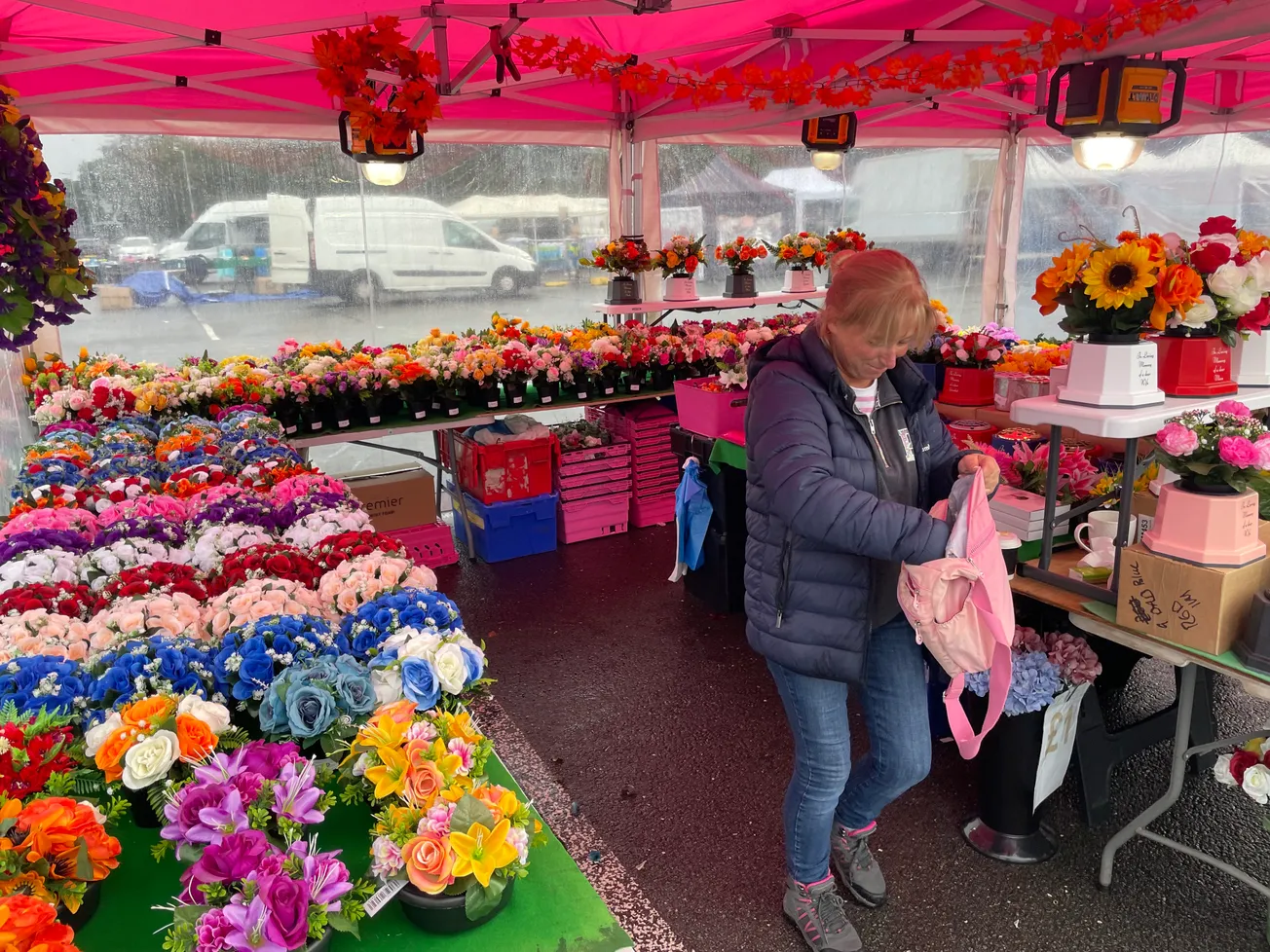
David Lloyd bargain hunts through Wednesday bazaars and samples the wares of weekend souks
Today's weekend read is about Liverpool's market scene, from Lark Lane to (Car) Bootle. We think it's one of the loveliest pieces of writing we've published in some time, brought to you by a dedicated editorial team but made possible by our paying members.
If you've been enjoying our work and want to support quality local journalism like this, please sign up to The Post today for just £1 a week. You'll get access to our entire back catalogue of paywalled stories, receive all our extra editions per month, and be able to come along to special members-only events.
It’s a soggy Wednesday morning. Overnight, September has stumbled soggily into October, and Liverpool is glowering beneath a 20-tog nimbostratus duvet.
I head out of town, up Everton Valley, and squint at the monochrome city. All pewter puddles and steely skies. Even Goodison Park looks like it's painted in gunmetal grey.
Summer has moved on. The crisp days and golden light of Autumn have yet to arrive, and the only proof that Christmas is coming is the seasonal aisle of Homey B’s, Santa doorstops duking it out with pumpkins, or the return of Strictly Come Dancing. Septober is a miserable season.
But there is colour here, in the enterprise that’s taken over the asphalt sheet of Anfield’s carpark on this drizzly Wednesday. Juicy red pomegranates, vivid purple anemones and acid yellow Polo boxer shorts, three for twenty quid. They splash the grey tarmac with a kaleidoscopic display that would dazzle a bower bird.
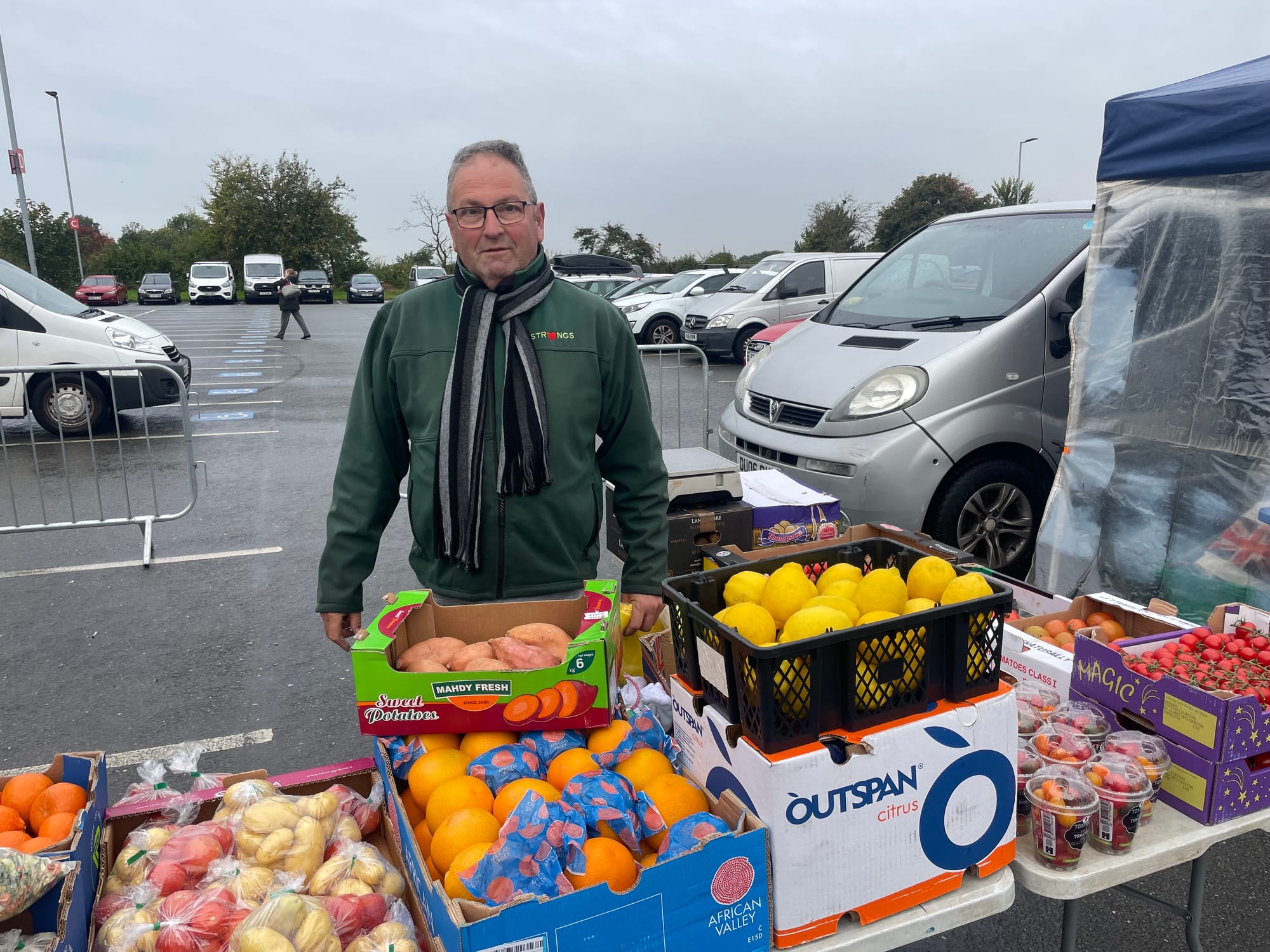
Welcome to Stanley Park Market: your social prescription to keep SAD at bay (and grab a Taylor Swift brushed cotton duvet set for £20).
We’ve talked a lot (well, I have) about how the city’s meddled and mangled its market offer. Greatie’s been squished and squashed into a tin hut, Broadway’s shuttered up for good and St John’s. Well, let’s not. I’m depressed enough.
But last year, something remarkable happened. The city launched this new market, in the shadow of LFC’s Anfield Road Stand. It's been a huge success. So much so that, for the first time in a long time, it’s fair to say (my) talk of the death of Liverpool markets has been somewhat exaggerated. We can only pray that Malcolm Kennedy doesn’t fly back from Spain any time soon and magic it into a Sainsbury’s.
Stanley Park’s Wednesday market started small: just 40 or so intrepid traders set up their stalls last summer. Since then, it’s grown three-fold. Today, it’s a huge tented village, with forests of frocks, a canopy of handbags, and a teeming undergrowth of underwear. There are butchers’ vans, baked goods, serried ranks of fabric softeners and lovingly (and locally) hand-knitted baby clothes. Hands up whose High Street has seen such a turn around in the past 12 months? And even in such inclement weather, punters are turning out in force. I arrive early but the car park is full of people, of all ages and walks. Lads in tracksuits mooch alongside chattering families. Truth be told, the market feels like the only place with signs of life for miles.
Stanley Park is proof, if it were needed, that markets – done right – still have the power to drag us from our sofas for a mooch about in the drizzle when we could be watching Loose Women with a mid-morning battenberg and a milky coffee.
Between shouts of ‘come on girls, only a tenner on your kids pyjamas’, and ‘get your fleecy ‘oodies, only £20’ (the latter making me file a mental note to return and finger his merch later).
“We get a lot of stick for our mistakes, but we never get credit for the good ones,” Liverpool City Council’s Lead Markets Officer, Chris Connor tells me as we loiter about while the traders are setting up.
“This place is a real breath of fresh air,” he says. “The community badly needed something. They’ve only got the ASDA, which is a good half an hour’s walk away.”
I can vouch for the fresh air. There’s nowhere for the wind to hide this morning. Storm Amy is en route and the canvas flaps of Pets Parlour are shaking like a whippet off to get the chop.
“I was in St John’s for 35 years,” stall owner Mike tells me. “Yeah, it was old and smelly, but it worked. But it wasn’t good enough for the council, so they revamped it, and sucked the life out of it.”
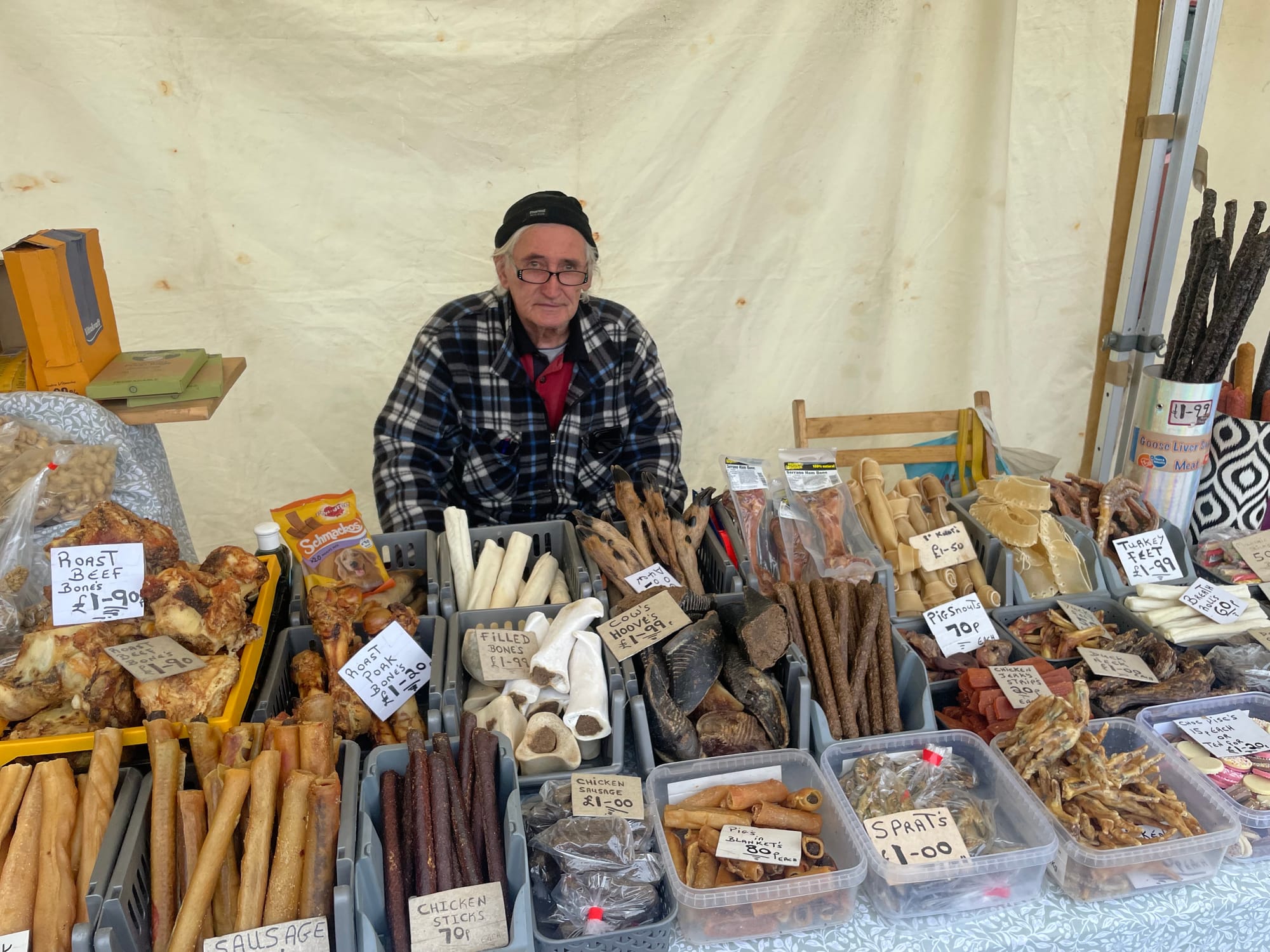
As St John’s became unrecognisable, Mike moved onto Stanley Park and is happy with his new home. “We’re doing ok,” he says. “People love the space here.” But, he says, looking heavenwards: “the weather can be changeable. And if Liverpool are playing on a Wednesday, we get kicked out.”
“They tried to kill off Greatie,” Mike adds, “but it’s still hanging on. They’re talking about revamping that, too.” his partner says, with a look of mild terror. “But we trust Chris,” she continues quickly, lest my companion’s feelings are hurt, “he’s straight up. Unlike some of the ones before him.”
“We’re spending five million on Greatie,” Chris says, trying to assuage their fears. This will result in more space and a bigger car park, he explains, to make it more “user-friendly.”
“Is it perfect?” Chris asks, rhetorically. “No. But it’s still really busy.”
He says there’s also plans to turn the revamped market into a community hub on the days the traders vacate it, too.
“That’s fine,” Mike interjects, “but first and foremost it has to be a proper, functioning market. That’s what it was built for.”
As Chris saunters off to deal with a rising emergency at the Christmas wrapping paper stall, I meet Hannah and her mum, browsing the babywear at Baby Millies Boutique.
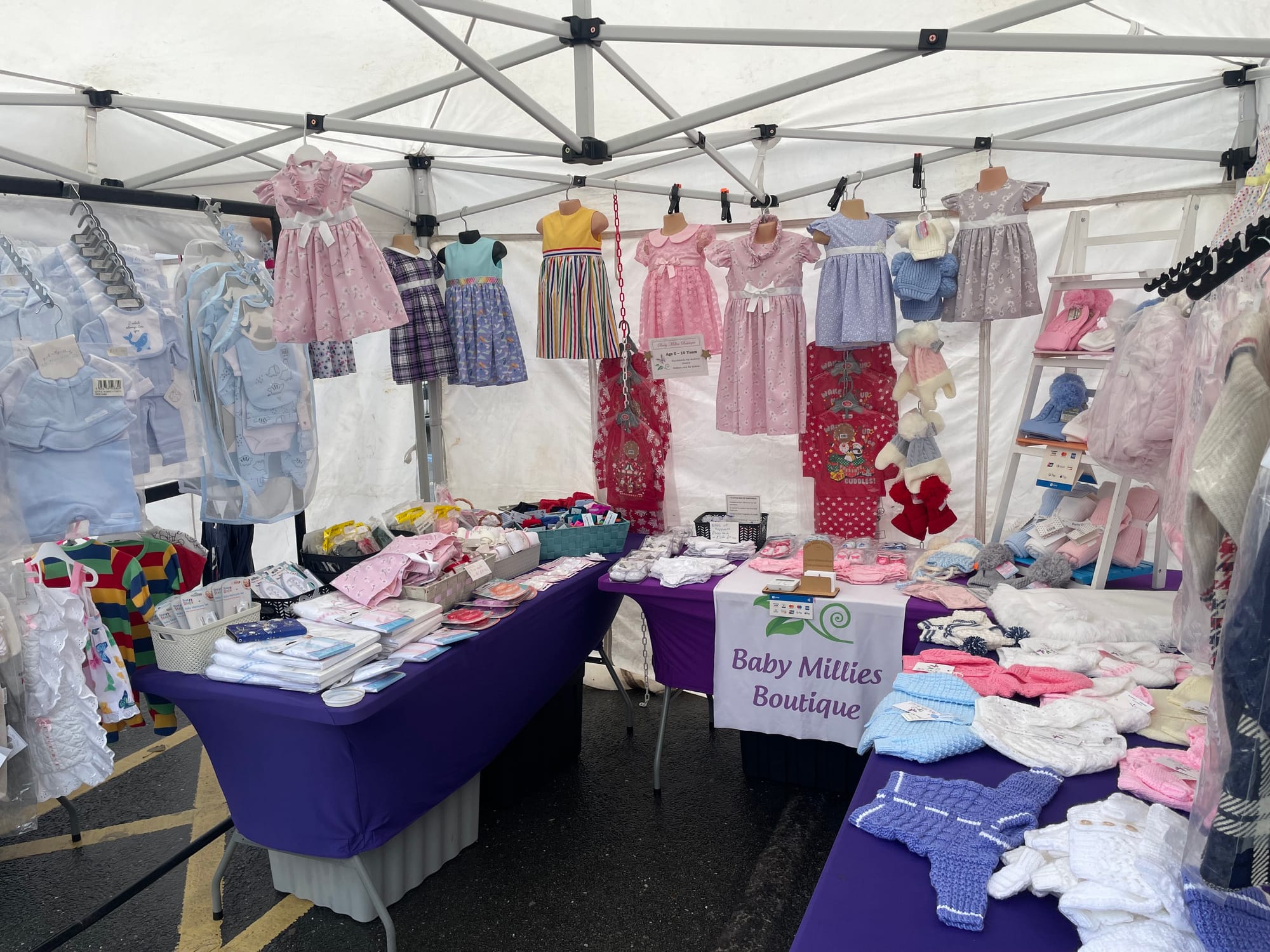
“We heard you talking about Greatie,” Hannah says. “It’s a joke. You try moving this around inside it,” she says, pointing to her mum, snuggly tucked into a Ferrari-red mobility scooter. “There’s no chance.”
“We love it here,” her mum says. “We see neighbours we haven’t seen for years. Since Covid everyone disappeared. It’s like there’s a community here again.”
Manning the Top Marks clothing stall, Aaron is less dismissive of Greatie’s demise.
Enjoying this edition? The Post is Liverpool's quality newspaper, delivered entirely by email. Sign up to our mailing list and get two totally free editions of The Post every week: a Monday briefing, full of everything you need to know about that’s going on in the city; and an in-depth weekend piece.
No ads, no gimmicks: just click the button below and get our unique brand of local journalism straight to your inbox.
“Greatie’s still the busiest market,” he says. “It’s got 240 stalls. But this place is doing really well. The parking’s fantastic. People have a real sense of pride that it’s here.”
“Parking’s a big issue,” his partner says. “Look at Garston market. It’s a joke.”
“It’s not just getting prams and scooters around,” Aaron says, “people like coming with their dogs after a walk in the park. There was nothing here for the community, and they’ve really taken to it.”
There’s much wringing of hands these days about the loss of our third spaces – whether they’re churches or boozers, hairdressers or laundrettes. Places where we come together, forge friendships and check in with our neighbours. Spaces that bind us to each other and to the city itself. I sometimes despair that the decline is a terminal one. And yet, leaving Stanley Park, there’s a little spring in my step, despite the rain.
Stanley Park is proof that, the more the world seems desperate to pull us apart and ringfence us into our own little enclosures, the more we crave these democratic spaces where everyone is welcome.
We’ve fretted, in these pages, too, about Lark Lane’s mutation – the relentless advance of bars and restaurants that threaten to turn the street’s quirky procession of independent traders into a monoculture of ersatz small-plate emporiums. But here, too, there is hope.
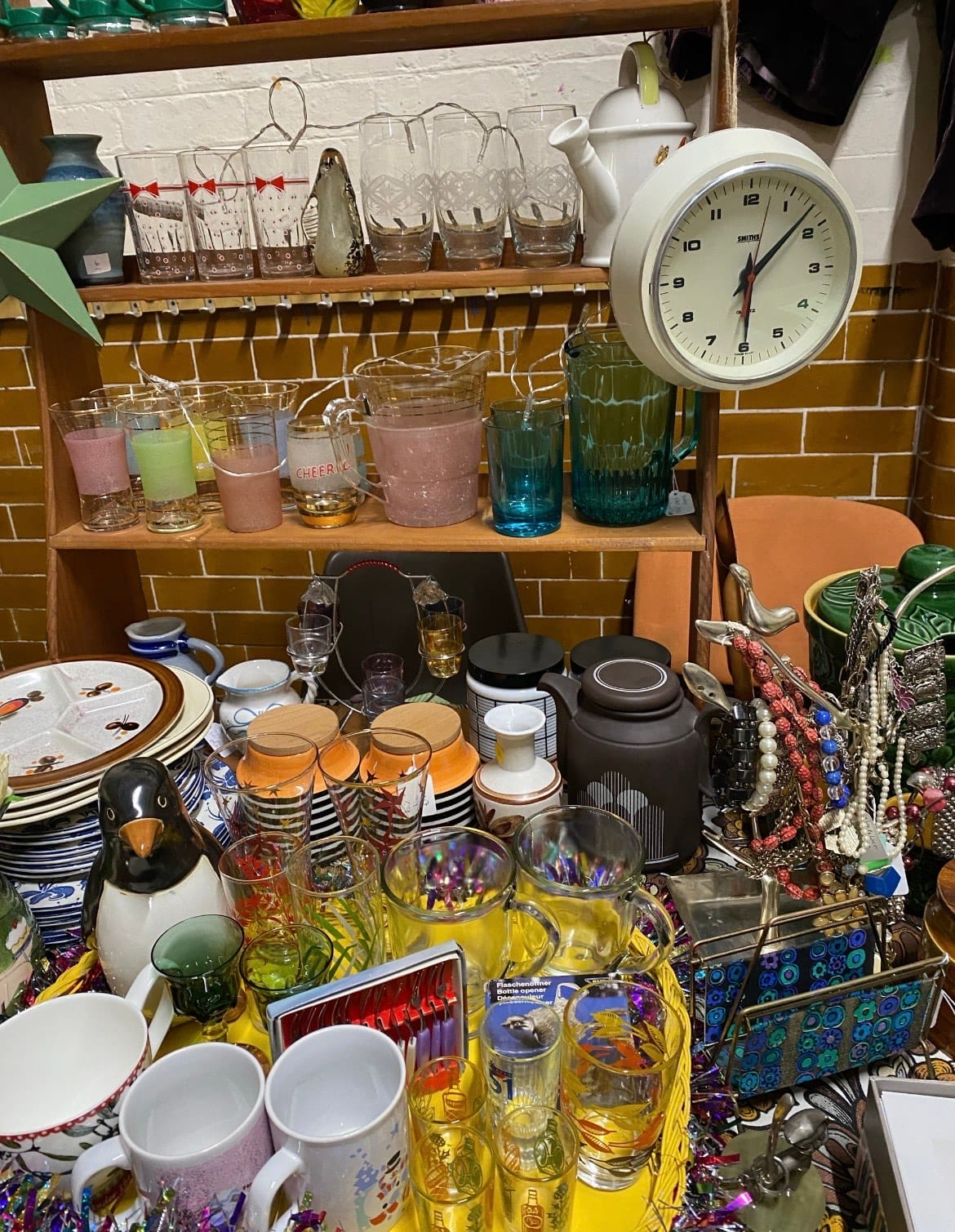
Lark Lane’s flea market had been a staple of the street’s calendar for 40 years when Covid-19 forced it to close. Stall holder Diane Hynes is the market’s new boss: a position she never really saw coming. A Lark Lane institution, Hynes was waiting in vain post-pandemic for the monthly market to crank into gear again. Eventually she rang its steward, Rupert, who gave her bad news.
“He said he was ready to hang up his keys,” Hynes remembers. “So I jumped in.” She’s been overseeing Lark Lane Market’s ‘renaissance’ for the past few years, although with less time on her hands, Hynes has switched from her former bric-a-brac stall to running the Lark Lane pop-up cafe.
“Everyone talks about how Lark Lane isn’t the same as it used to be, and that no one can afford to live here, but that’s not the full story,” she says. “We’ve still got the city’s oldest housing co-operative, and this place,” she says, showing me around the Community Centre’s tables, rapidly filling up with filigree candelabras, silver jewellery and Motown vinyl.
“We only charge £15 for a table,” Diane says, citing another flea market in the Baltic that levies a cool £55 for theirs. “This isn’t a money-making enterprise for us. It’s a community event, and that’s the way it will stay while I’m here.”
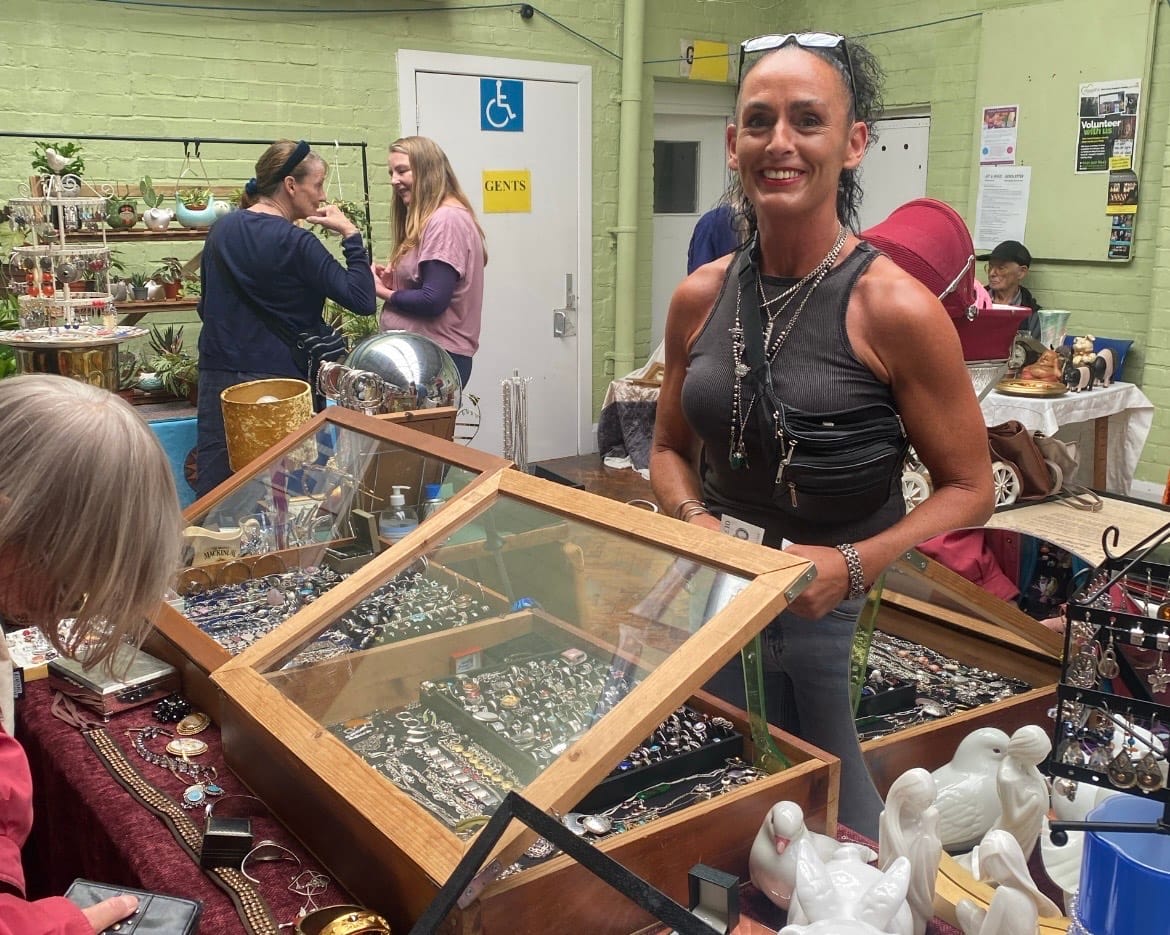
With around 45 traders, the market’s pre-loved and home-made schtick clearly hits a chord with its loyal regulars, who’ve been coming for years: “People love a bargain,” Diane says, “but mostly, they love the fact that this is a part of Lark Lane that feels like it always has. There is still a beating heart to this community,” she says.
Every last Sunday of the month (and the second Sunday in December), Diane’s awake early doors, butter knife in hand. “It’s hard work,” she says. “I’m up at three in the morning making the sandwiches, but I love it.”
If bric-a-brac’s your thing, though, it might well be time you headed north, to Bootle. For the past twenty years, Dave Asbridge has miraculously orchestrated the Transit vans of collectibles, house clearance flotsam and jetsam and trestle tables of trainers into the city’s most popular car boot. It’s called Car Bootle. Of course it is. And if you’re not setting up your gear at five in the morning, you’re the big loser.
“Where else can you have a boss day out in Bootle?” Dave asks, as we stroll around his Trinity Road car park site. “I’ve been offered millions for this place,” he claims, “and before we started it was just a dead corner of town.”
Dave’s “only motivation” for establishing Car Bootle were his childhood memories of visiting Great Homer Street staple, Paddy’s Market, he informs me, as we weave past plastic tubs filled with super heroes, and clothes stalls crammed with clobber from the likes of Zara and M&S.
“Places like this are in my blood,” Dave — who calls himself ‘King of the Carboot’, says. “If I didn’t own it, I’d be queuing up every Sunday.”
He’d have to get here early. Punters start snaking down the road from around six in the morning, ready for a bacon roll and a serious session of haggling.
“There’s people who come just to have a great day out, but there are plenty who need to come,” Dave muses. “Some of my traders have packed everything they can into their car because they need to make money to pay their bills. Places like this are a lifeline, in so many ways.”
Liverpool talks a lot about the importance of community in this city, but Dave stresses that sites like Car Bootle is: “what it looks like. Young and old, different cultures, different social classes, all together, in a safe space, having fun. It’s a very Liverpool thing.”
These spaces are our connective tissue – places where we become entangled with the static charge of the city we love. Liverpool used to be awash with them: these safe little harbours of commerce, conversation and conviviality.
“We stopped going into town years ago,” I recall a shopper at Stanley Park telling me. “It’s not for the old folk like us anymore.”
These little muster stations really matter. Sure, they’re not pretty. They probably don’t feature on the glossy brochures our councillors hand out at expos, and you won’t see them on the official Visit Liverpool site, next to the happy couples strolling along Hope Street. But they’re more than a functional place to buy some clobber — after all, if that were true, online shopping would have killed them off and you wouldn’t have a cross-section of Liverpudlians happily pootling about Anfield’s car park on a Wednesday in the pissing rain. At the end of the day, as with so much in this city, it’s the craic that binds us. I previously thought these markets were the last artefacts of a bygone history. But Stanley Park and its counterparts have conferred optimism. Don’t count Liverpool’s markets out just yet.
Enjoyed this story? You can get two totally free editions of The Post every week by signing up to our regular mailing list. Just click the button below. No cost. Just old school local journalism.
Thank you for joining us on today's hopeful tale of bargain hunting and tentative optimism. You can support what we do — and access our entire stall of tantalising journalistic wares — by deciding to become a paid subscriber. It costs just £1 a week.
If you’d like to sponsor editions of The Post and reach over 35,000 readers, you can get in touch at grace@millmediaco.uk or visit our advertising page below for more information

Comments
Latest
The Hill Dickinson is a world-class stadium. Everton must find a team to match
Above us, only sky: John Lennon Airport’s boundless ambition
The 500 extra e-scooters bolting towards Liverpool
You're invited to our festive ghost story special
Of car boots and kings: the surprising revival of Liverpool's markets
David Lloyd bargain hunts through Wednesday bazaars and samples the wares of weekend souks